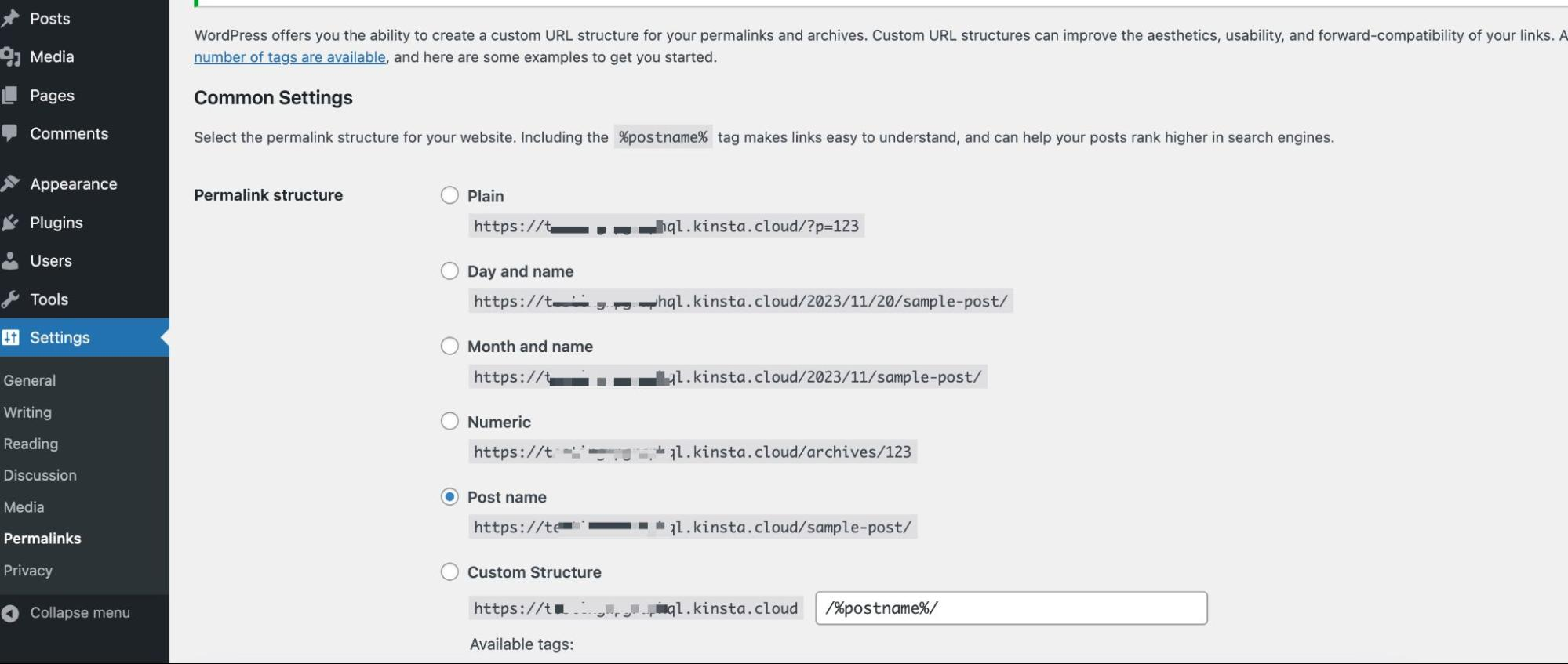Headless WordPress strips away the front-end layer from the content management system (CMS), so developers can use any technology stack for the front end. At the same time, WordPress powers the content management in the backend.
This separation of concerns boosts your site’s speed and security while opening up a world of possibilities for using modern front-end technologies like React, Vue.js, and other frameworks.
However, embracing headless WordPress brings unique challenges, particularly in choosing the right hosting environment to support the architecture. This article explains the critical aspects of selecting the ideal hosting platform for your headless WordPress journey.
Understanding hosting needs for headless WordPress
With headless WordPress, the architecture shifts from the traditional monolithic approach to a decoupled setup, dividing the content management aspect (WordPress backend) from the presentation layer (frontend).
This division necessitates hosting for both components, each serving distinct yet interconnected purposes. On one hand, the WordPress backend houses all your content, media, and essential functionalities. Given its critical role, ensuring a robust hosting solution for WordPress is paramount.
Security measures must be stringent to safeguard valuable data, and performance optimizations are crucial to maintain seamless content management operations. Investing in reliable WordPress hosting ensures stability and scalability, safeguarding your site’s foundation.
On the other hand, the frontend — detached from WordPress, using popular libraries like React.js or Vue and Static Site Generators (SSGs) like Next.js, Gatsby, or Nuxt.js — must also be hosted.
By striking a balance between reliable WordPress hosting and efficient frontend deployment, you can construct a headless WordPress ecosystem that thrives on stability, scalability, and cost-efficiency.
Factors to consider when choosing a hosting provider
Your hosting provider plays an important role in ensuring your site’s performance, security, and scalability. Here are some key factors you should consider when making this critical decision.
1. Performance
Backend performance is essential for headless WordPress. Content creators and editors rely on a responsive WordPress admin interface for managing content. A slow backend can lead to frustration and reduced productivity for these teams.
Moreover, in a headless WordPress setup, the WordPress REST API acts as the conduit between the backend and frontend. Optimal backend performance ensures that API requests are processed swiftly, minimizing latency for frontend interactions and data retrieval.
Also, as traffic and content volume increase, the backend infrastructure must scale seamlessly to accommodate the demand. A hosting provider capable of scaling resources helps the backend remain responsive and available during periods of high traffic.
Various WordPress hosting options exist, each with its own set of advantages and limitations. Traditional shared, VPS, and dedicated hosting offer familiarity but may lack the performance optimizations necessary for robust headless WordPress setups.
However, an exceptional hosting provider like Kinsta, built on the Google Cloud Platform and accelerated with Cloudflare integration, distinguishes itself from traditional hosting models.
Every WordPress site on Kinsta’s platform operates within an isolated software container, ensuring privacy and resource optimization. This containerized approach eliminates the resource contention often associated with shared hosting environments, guaranteeing consistent and reliable site performance.
Kinsta employs advanced caching mechanisms and server-level optimizations to streamline backend processes, reducing latency and enhancing overall performance. With Kinsta’s robust infrastructure and optimized server configurations, API requests are processed swiftly, ensuring minimal latency for frontend interactions in headless WordPress applications.
2. Security
Security is of paramount importance in any online environment, and this holds particularly true for headless WordPress setups. It’s critical to ensure robust security for the backend WordPress installation and any connected frontend applications.
In a headless WordPress setup, the backend WordPress contains sensitive information, like user data, content, and configuration settings. Vulnerabilities can lead to unauthorized access, data breaches, or content manipulation. This jeopardizes website integrity and user trust and can lead to legal ramifications.
Since headless WordPress setups often involve integration with various frontend applications, securing the communication between the backend and frontend is essential. Malicious actors can exploit weaknesses in this communication channel to intercept or tamper with data exchanged between the two layers.
At Kinsta, we know that the security of your data is of the utmost importance. That’s why we’re dedicated to providing the most secure hosting service and taking numerous active and passive measures to safeguard your site.
All sites on Kinsta are protected by our free Cloudflare integration, which includes an enterprise-level firewall with a custom ruleset and DDoS protection. With our Cloudflare integration, you’ll get the benefits of enhanced security and performance without having to manage your own Cloudflare account.
Some of Kinsta’s key security measures include:
- Monitoring sites every two minutes for uptime, 720 times a day.
- Rigid software-based restrictions to stop malicious code from entering your website.
- Real-time DDoS attack detection and mitigation.
- We support two-factor authentication (2FA) and automatically ban IPs that make over six failed login attempts in a minute.
- A dedicated Security Team to address malicious attackers, hacks, and exploits.
- Free Cloudflare integration with a secure firewall and built-in DDoS protection.
- Support only for encrypted SFTP and SSH connections (no FTP).
- Completely isolated containers (LXC) are used, and LXD is used to orchestrate them, so there’s no chance of cross-infection from other clients.
- Free Cloudflare SSL certificates with wildcard domain support.
- A 100% Malware Security Pledge if your site is infected with malware while hosted on Kinsta.
- Automatic security checks for every plugin installed to discover vulnerabilities and/or security issues.
- Free automatic daily, optional hourly, manual, system-generated, downloadable, and optional external backups that are sent to your Amazon S3 or Google Cloud Storage.
In the rare event that something were to happen to your site, our Malware Security Pledge means you will get hands-on assistance from our engineers free of charge.
3. Support for headless architecture
The headless architecture involves integration with various frontend technologies, which also must be hosted. Your host should offer compatibility with technologies your front end may require, such as Node.js.
Kinsta makes life easy with its single dashboard (MyKinsta) that powers different hosting services (WordPress Hosting, Static Site Hosting, Application Hosting, and Database Hosting). This means you can host the backend on Kinsta’s premium WordPress Hosting and the frontend on our free Static Site Hosting or Application Hosting, depending on your needs.
For Static Site Hosting, Kinsta provides robust support for pre-built static sites or sites built with modern static site generator (SSG) frameworks that utilize Node.js.
As an alternative to Static Site Hosting, you can deploy with Kinsta’s Application Hosting, which extends its support beyond static sites to encompass a wide range of applications built with various programming languages, deployed using Nixpacks or Buildpacks.
Application Hosting provides greater flexibility, a wider range of benefits, and access to more robust features, including scalability, customized deployment using a Dockerfile, and comprehensive analytics encompassing real-time and historical data.
4. Scalability
The internet is unpredictable. Your hosting solution should effortlessly handle sudden traffic spikes, ensuring your site remains online and performs well under pressure.
As content is added or updated within the WordPress backend, the demand for server resources may increase. Sudden surges in traffic, whether due to marketing campaigns, viral content, or external events, can also put significant strain on hosting infrastructure.
If you’re looking for a scalable host, Kinsta has you covered. With Just a few clicks, you can scale up and down between plans. Best of all, there is no downtime when switching plans, and your hosting bill is automatically prorated with a transparent and controlled cost!
Our containerized infrastructure allows sites hosted on Kinsta to automatically scale CPU and RAM usage in response to traffic surges.
5. Price
While cheap hosting can be tempting, it often comes at the cost of performance and security.
Kinsta offers transparent pricing plans tailored to various needs, which is advantageous for headless WordPress setups. While Kinsta’s pricing is viewed as premium compared to some other hosting providers, the value it delivers in terms of performance, security, and support can outweigh a higher price tag.
Additionally, Kinsta’s plans come with generous resource allocations, including bandwidth and visits, which can accommodate the demands of a headless architecture without incurring additional costs.
Here are some additional benefits you get when you use Kinsta:
- All Kinsta plans include free access to our custom application performance monitoring tool (Kinsta APM) for debugging WordPress performance issues.
- Kinsta performs weekly automatic MySQL optimization on all your sites to optimize database performance.
- Kinsta is well-known for its world-class support, staffed by WordPress experts and Linux engineers. It is available 24/7/365 for all our customers via live chat, with an average response time of under two minutes. We also offer multilingual support across all of our plans.
- Sites on Kinsta are equipped with a self-healing PHP feature. We monitor all sites on our infrastructure 720 times daily and offer an uptime guarantee.
- Kinsta always supports the most recent version of PHP and supports different versions for staging environments. Switching between PHP versions takes just a few clicks in the MyKinsta dashboard.
- MyKinsta dashboard includes useful site management tools such as database search and replace, free IP Geolocation manager, ionCube loader, PHP restart, and more.
Setting up headless WordPress on Kinsta
Going headless on Kinsta involves creating a WordPress site and configuring it so you can access its data via the WordPress REST API. There are three methods to build a WordPress site using Kinsta:
- Create a site on your local machine (perhaps using our DevKinsta tools) before moving the site to our servers
- Create a site remotely using the MyKinsta dashboard
- Create a site remotely using the Kinsta API
Once you have a WordPress site, you can fetch its data into your frontend framework via the WordPress REST API. The API facilitates data retrieval in JSON format using JavaScript approaches like the Fetch API or the Axios library.
The API has been built into WordPress since version 4.7, meaning it does not require any plugin to work. All you need to do is append /wp-json/wp/v2 to your WordPress site URL:
http://yoursite.com/wp-json/wp/v2If the JSON API is not enabled when you visit http://yoursite.com/wp-json by default, you can enable it by opening Permalinks under Settings in the WordPress dashboard and selecting Post Name or any option other than Plain:

This works for local and public WordPress sites, offering endpoints for content that includes posts, pages, comments, and media. To learn more, read our complete guide to the REST API.
Summary
Choosing the right hosting for a headless WordPress site is a pivotal decision that can significantly impact your project’s success.
By prioritizing performance, security, and scalability and selecting a hosting provider that understands the intricacies of headless architecture, you can set the stage for a robust, flexible, and future-proof digital presence.
Embracing headless WordPress with the right hosting partner by your side, you’re on your way to unlocking a new realm of possibilities for your web projects.
What has been your experience with headless WordPress? Share with us in the comment section.



Leave a Reply